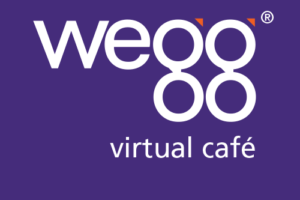
12 Questions for Web Globalization Expert and wegg® Specialist John Yunker, Byte Level Research During Our weggchat® 5/1/19
Here is an excerpt from our hashtag #weggchat (follow @weggtoday) held on Wednesday, May 1, 2019 at 11:00 a.m. Central time.
Learn How to Expand Your Global Reach Online
Our weggchat™ guest is John Yunker, co-founder Byte Level Research and wegg® Specialist. Our moderator is Bob Marovich, Director of Development, Women Entrepreneurs Grow Global™ (www.womentrepreneursgrowglobal.org).
Welcome to our weggchat everyone. Thank you for joining us. Today we are delighted to have John Yunker, co-founder of Byte Level Research (www.bytelevelresearch.com) and wegg Specialist with us. Morning John and all!
Here is how our weggchat runs. We have 12 questions. I’ll send the first one as Q1, which shows it is official and then John @JohnYunker can respond w/A1. Everyone feel free to comment or share your experience relative to the questions. Let’s have fun, learn and grow global together! Don’t forget to include #weggchat in every tweet. Here we go!
Q1: Tell us about yourself. What drew you into web globalization, specifically translation?
John Yunker: My background was in marketing and web development. In the late 1990s I began localizing websites. At the time, there were no best practices for web globalization – so I co-founded @bytelevelresearch in 2000 to help change that. Since then I’ve worked with some of the largest global companies to improve their global sites and apps – as well as some of the smallest. I write the annual Web Globalization Report Card; the 14th edition came out recently. Wikipedia emerged number one overall. I am first and foremost a writer. I love language and consider myself a language generalist.
Q2: You’ve often talked about the information economy is the now the translation economy. What does this mean for all of us with websites?
JY: The Internet connects computers but language connects people. Which means that information is useless if you don’t understand it. That’s where translation fits in. Translation unlocks information for new and larger audiences. For too many years the Internet was dominated by English content and users. But English is no longer dominant. Fewer than 25% of Internet users are native English speakers. To reach more than 90% of all Internet users you need to support 40 approx. languages.
Q3: Why is global ecommerce so challenging?
JY: Just because people around the world can see your products and services does not mean they can comfortably and confidently purchase them. You may need to localize the products themselves to the market and culture. You will need to support local currencies and payment platforms. How will you handle customer support? Product returns? And how well will you ultimately fare against local competitors? Too many companies fail to fully survey their target markets before jumping in.
Q4: Is there on consistent trend in web globalization that we should be aware of?
JY: Language growth. Companies continue to expand their linguistic reach. Mobile. It’s not enough to make sure your website support mobile devices, you also need to support mobile scenarios. And be sensitive to slower networks in many markets. One of the easiest ways to improve the local user experience is to simply set aggressive weight limits with your website Balkanization. Countries and regions are exerting greater influence over the internet. A more decentralized website can help you adapt to this trend.
Q5: What are two essential stages to taking a website global? Do most companies get it right?
JY: Internationalization and localization, sometimes curiously abbreviated as i18n and l19n. The numbers refer to the number of missing characters. Internationalization is the process of creating a “world ready” site or app. Localization is the process of adapting to a specific market or region. Translation is one aspect. Most companies focus only on localization and forget that internationalization can significantly improve their localization processes (and cut costs) For example, a global template is one way of internationalizing a site (or app) so it can be more efficiently localized.
Q6: What’s a global gateway and what are the tools that companies can use to make this process seamless?
JY: A global gateway is everything you use to help visitors find their localized websites and content. It includes the visual global gateway that visitors may interact with to change locales It may also include backend technologies like geolocation and language negotiation. And it includes ccTLD (country codes) so that people can go directly to their local sites.
Q7: How does culture impact success or failure when developing a global website?
JY: Culture is what makes localization so incredibly challenging and unpredictable. Because every region and country has many cultures. And cultures change.
Q8: Is global consistency essential and possible when developing multiple websites in different countries? Is there such a thing as a global template? Any company who is doing this right that we can use as a model?
JY: Global consistency is absolutely essential, particularly if you’re a small business, because it allows you to scale your global presence more efficiently. Microsoft, Adobe, Wikipedia are three great examples.
Q9: For global small business owners, what’s the best way to globalize a website on a shoestring yet still achieve successful results?
JY: Set reasonable and reachable goals. For example, if you offer 100 products, perhaps pick just 1-10 for the target market. Study your global competitors. What markets have they selected and why? How are they doing? If you’re just starting out, pick markets that pose fewer legal, political and technical obstacles. China, for instance, is a very difficult market and I generally advise companies to look elsewhere when they are just starting out. And, yes, that means the UK is also a risky market to target right now because of Brexit. Engage with your local customers and pick their brains. Why did they choose your products? Who is the competition? Study the logistics and laws. How will you get products to your customers and how will this affect price? How do you handle returns? Email, voice, chat support? Find local vendors of similar size who can act as true localization partners. Ideally your vendors have a local presence in the market.
Q10: Any perils to premature web globalization?
JY: Many! If you take your website global but can’t manage multilingual email requests, you’re in trouble. And I’ve witnessed companies that did a poor job of localization, saw little traffic to the sites, and then decided there was no local demand. Instead of realizing that THEY had failed their customers. The demand was there but they didn’t properly serve it.
Q11: Is there an ultimate global checklist available that covers many of the key issues companies face when taking a product or service global?
JY: I include a lengthy list in my book Think Outside the Country. Also, follow my blog at www.globalbydesign.com.
Q12: What’s the one thing you’d like to leave everyone with today that we missed?
JY: Empathy is the “secret sauce” of global success. Put yourself in your customer’s shoes, which means understanding their mobile devices, networks, cultures, fears, and frustrations. In effect, do all the things you did when you first began serving your first group of customers. Going global is about succeeding locally, one country, region, and culture at a time.
In closing, thank you John for sharing your expertise with us, thank you to Bob for moderating, and a big thank you to our wegg sponsors for making this weggchat possible: IBM, Bank of America, GlobalCare Clinical Trials, Harris Bricken, FedEx and Greensfelder.




